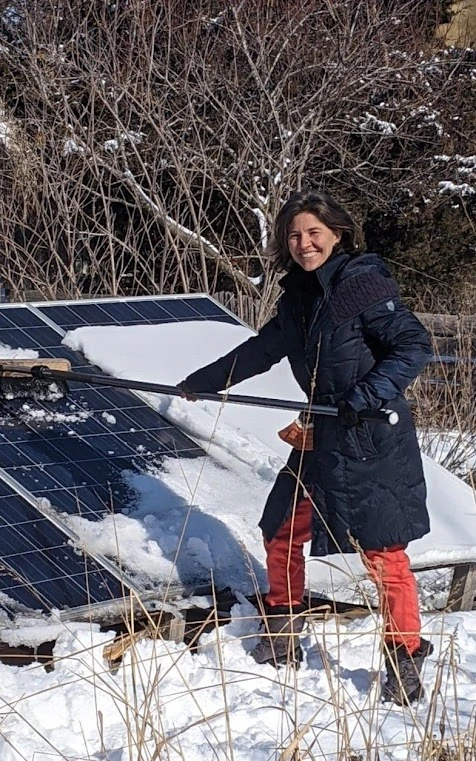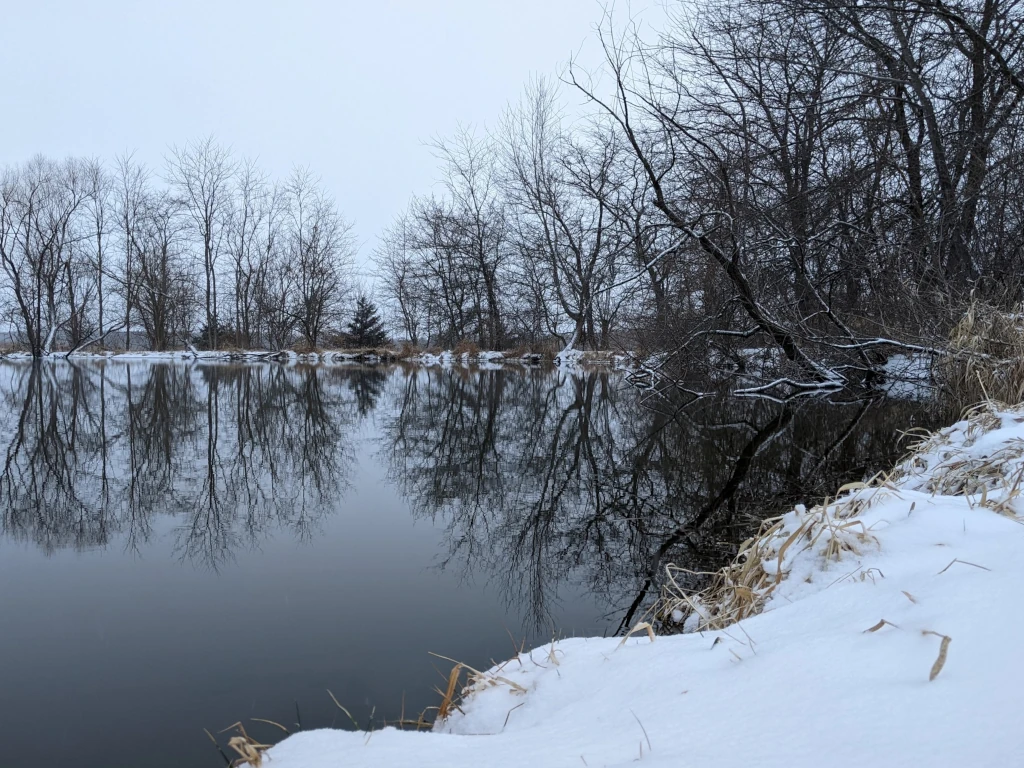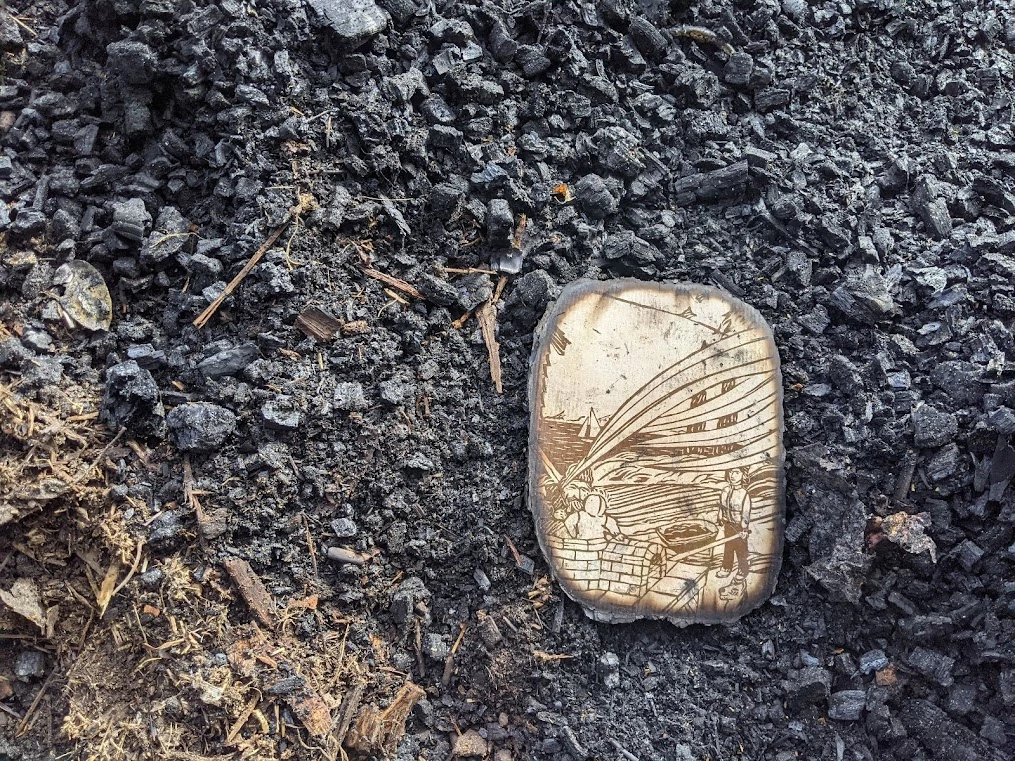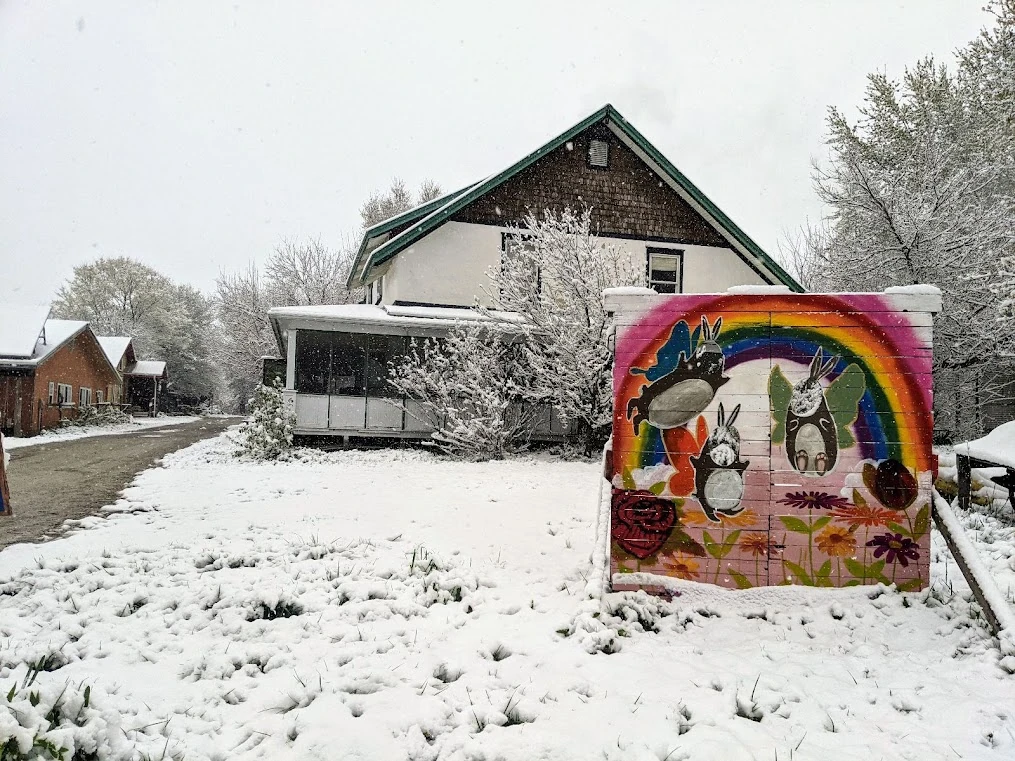Happy Winter Solstice and more!
For those of us in the Northern Hemisphere, this is the dark time of year, the cold time of year, the time of visioning, reflecting and looking inward. If we make good use of this time, we can find what sources us, fires us, and inspires us, as well as what we want to move towards in the year ahead. The seasonal practice of building and tending fires to keep us warm at Dancing Rabbit supports this period of contemplation, as do our annual committee rhythms of planning budgets, priorities, and goals for the year ahead.
Earlier this month, I joined a crew of Rabbits on a service week down at Ekvn Yefolecv, the Maskoke ecovillage that you may remember hearing about from our writings this spring. The founders of Ekvn Yefolecv contacted us years ago when I was working as the CSCC Correspondent (general point person for communications with the outside world) for Dancing Rabbit, and they shared their vision for returning to their ancestral homeland. As such, it was particularly awe-inspiring to see what they’ve manifested over the last five years. Not only are they preserving the culture by teaching the children (and adults) the native Maskoke language, the traditional village structures are being built using the most earth harmonized technologies possible and therefore serving as an outer expression and reinforcement of their worldview.
They are in the process of bringing bison back to their lands, and our particular way of being of service that week involved taking down fence lines to merge the pastures where the bison will be moved. Each day, five of us Rabbits donned gloves, fence cutters, and machetes and hacked our way through thick brambles and sharp thorns that barricaded the fence (acquiring many a scratch in the process). When we finally managed to clear our way through the brambles, we cut and extracted the fence one section at a time, often having to summon a “heave-ho” pulling effort to dislodge it. Our strength was spent by noon, but we went back to work after lunch anyway, finding more reserves in the home-cooked food served for meals and our desire to contribute. While lowering my exhausted limbs into my sleeping bag after the first day of taking down fence, I questioned my ability to make it through the week. My muscles ached to the point that I wasn’t sure I could lift my arms over my head, and I hadn’t felt such body fatigue since becoming a river guide over a decade ago.
Yet each morning, I would rise and take in the beauty of the lake and walk past the pools of sturgeon (a fish sacred to the Maskoke people), and I wanted to give more. When our crew met up after coffee to go back out to the fences, I found vigor in being part of a group that cares about this sort of work; each of us willing to sacrifice a week of earning income and other personal pursuits to put our hands where our values are and be a living expression of cultural reparations. Fortunately, the work was symbolically important as well. With each section of fence removed I reminded myself that we were evicting barriers erected by my ancestors between honoring the earth, the animals, and the people already there. As the days wore on, our progress became more visible and it was satisfying to see two open fields that had previously been separated now merged, and to know that we were healing cultural layers of separation in the process.
Our time at Ekvn Yefolecv happened to coincide with the full moon, which further deepened the experience and sense of importance around what we were doing. As I gazed up at the brilliant moon rising over the proud pine trees one night, relief washed over me knowing the trees on this land were safe from being clear-cut (unlike the surrounding acreage) and even the animals used for food would be honored and thanked. Walking the footpath back to my tent, it dawned on me how special it is to be alive at this time and witness this particular village springing forth from the hands of those who remember how to be good stewards of the land. After centuries of cultural destruction and dislocation, these native peoples are finally returning to the lands of their ancestors; the land that holds the memory of who they are and their role in the web of life. I felt like I was getting to play a small part in a grand prophecy of restoration unfolding after a long period of darkness and despair, aiding in a small but significant cultural comeback that will positively ripple out in all directions. Gratitude washed over me for the opportunity to contribute. Especially in this stretch between Thanksgiving and Christmas, I felt the gravity of the phrase I have repeated to myself so often this year: “Living is for Giving.” I sent up a prayer to the universe that I may continue to be of service to Ekvn Yefolecv and other life-affirming cultural comebacks, including this project here at Dancing Rabbit. While the majority of folks at Dancing Rabbit are white and have European immigrants in their ancestry, we are nonetheless creating a place-based culture that honors all people and holds the land in common (instead of as private, individually owned property), aiming to preserve it, nourish it, and learn from it. We are undertaking a pivotal paradigm shift from asking, “how can this land serve us,” to “how can we serve this land and the ecosystems that depend upon it?”
Much like weaving a new rug from tatters of unraveled fabric (when our parents and grandparents never taught us how to weave), the cultural re-creation project we’re engaged with at Dancing Rabbit can be awkward and confounding. Yet we try anyway, knowing there’s nothing more important than investing in a healthy earth that can be home to healthy children and cohabitating creatures.
When we die, our legacy will be all that is left of us. The details of our daily lives will fade out of memory and the question about whether we gave ourselves to restoring balance and cultivating harmony on the planet will be answered by the next generation. These are times of dire beauty, and even though we may not have chosen of our own accord to live in such precarious times, all we get to decide now is what to do with the time that is given to us. If living truly is for giving, then let’s pay it forward and give life (in the form of energy, money, time, whatever you’ve been bestowed with) to the cultural comebacks around us. Your actions and daily choices add up, one by one, to the legacy you’ll leave. What will unleash you as a force for good this giving season, and in the year to come? How will your life be a contribution to the great turning of the tides?
We encourage you to take action now, in this window between winter solstice and New Year’s, that affirms and creates the more beautiful world your heart knows is possible. And let us know what it is! For those of you who know that money is a language of energy, nourishing whatever it is directed to, feel within yourself and ask if your heart is a yes for donating dollars to Dancing Rabbit or Ekvn Yefolecv (just leave a note in the comments when you donate and we’ll send it along to them), or other amazing initiatives this season. We know that there are many ways to give that are all worth acknowledging, yet in this world where we are still playing by some of the old rules, money is a powerful method of uplifting that which you want to see more of. Let your money be your message about what YOU want more of – today, this holiday season, and every day.
Finally, my holiday wish for you: May this time of long nights and short days improve your night vision, so that together we can envision our way back to a flourishing, interconnected ecosystem of people who have a net negative effect on atmospheric carbon, and a net positive effect on our kith and kin.
Be well,
Danielle Williams
P.S. Thanks to our matching donors, your donation will go twice as far this season! We’ve raised $3,996 already and YOUR donation will help us make it to $5,000!





